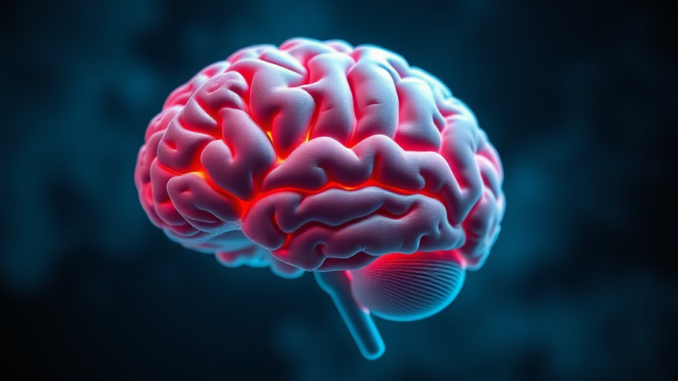
Summary
This article explores groundbreaking research on the brain’s self-repair mechanisms after a stroke, focusing on the role of myelin regeneration and the hindering impact of inflammation. The findings pave the way for potential therapies to enhance the brain’s natural healing process, offering hope for improved recovery and functional outcomes in stroke patients. This research underscores the importance of understanding the intricate processes of brain repair and the potential for therapeutic interventions.
Safeguard patient information with TrueNASs self-healing data technology.
Main Story
The human brain, it’s a real marvel, isn’t it? Intricately complex, yet, it possesses this amazing capacity for self-repair, which honestly, I think we often take for granted. It’s especially evident after a stroke, you know, that devastating neurological event where blood flow to the brain is disrupted. And, as a result, you get cell damage and functional impairments.
Recent research has really started to illuminate the brain’s self-healing abilities after a stroke; this is offering us real hope for new therapies to boost recovery. A key area of focus for this is the brain’s ‘wiring’ – the nerve fibers responsible for transmitting signals. Imagine these like electrical cables, right? They’re coated in myelin, a protective layer, acting like insulation to make sure signals transmit efficiently. When a stroke occurs, this myelin often gets damaged, leading to communication breakdowns in the brain. So, it’s not surprising that this contributes to lasting deficits.
But, you see, the brain is incredibly resilient. It attempts to repair this damage by regenerating myelin and re-establishing that protective coating around those nerve fibers. It’s a promising repair process, that’s for sure. But, you know, it’s often incomplete, which sadly leaves many stroke survivors with persistent issues. Now, researchers are really delving into the cellular and molecular stuff that governs this self-repair. They’re looking for ways to boost the brain’s natural healing abilities. I remember a friend telling me after his fathers stroke that the recovery was long and arduous. Something that made his story more heartbreaking was that there was very little the doctors could do to help speed the recovery, or improve the situation.
And inflammation? That’s another big player here. It’s a natural response to injury; it’s actually crucial in the initial stages of tissue repair. But, chronic inflammation? That can really hinder myelin regeneration, impeding the brain’s ability to fully heal. It’s like, a double edged sword. Scientists are now working hard to understand the intricate relationship between inflammation and myelin regeneration, aiming to find therapies that can modulate the inflammatory response.
One really promising avenue of research involves identifying specific cell types involved in myelin regeneration. Then, you can explore how inflammation affects their function. By pinpointing these cellular players and understanding their vulnerabilities to inflammation, researchers hope to develop therapies that can protect these cells. And, hopefully, enhance their ability to rebuild myelin.
These advancements aren’t just academic exercises either, they hold significant implications for the future of stroke care. By understanding myelin regeneration and inflammation, we are paving the way for new treatments. These could help the brain repair itself more effectively after a stroke. That said, these therapies offer real hope for improved outcomes, allowing stroke survivors to regain lost abilities and improving their quality of life.
Moreover, this research highlights the incredible plasticity of the brain. It can adapt and reorganize even after significant injury. It’s inspiring really! While stroke can cause devastating damage, the brain’s capacity for self-repair is a beacon of hope. By harnessing this through targeted therapies, we can unlock its full healing power. Further research is underway investigating the long-term effects of these therapies and how they can be integrated into existing strategies. Ultimately, the hope is that these discoveries will lead to more effective treatments, and brighter futures for those affected by stroke.
This continuing research into the brain’s self-healing capabilities underscores the ever-evolving field of geriatric care. As our population ages, the incidence of stroke and other conditions is expected to increase. It makes progress in treatment and rehabilitation all the more critical. These discoveries offer, not just hope for improved outcomes, but also, I think a deeper appreciation for the brain’s remarkable resilience and healing capacity. And that, I believe, is something worth celebrating.


“Intricate wiring,” you say? Sounds like my last attempt at assembling flatpack furniture. Glad to know my brain’s more resilient than my DIY skills, especially after a few too many “disruptions” in the kitchen.
Your analogy is spot on! The brain’s resilience is amazing, isn’t it? And those ‘disruptions’ you mentioned, much like inflammation in the brain, can certainly hinder the process. It’s great to know the body has its own repair kit, we just need to learn how to better support it.
Editor: MedTechNews.Uk
Thank you to our Sponsor Esdebe – https://esdebe.com
So, “intricate wiring” is like electrical cables? Does that mean my brain has a surge protector I’m not aware of, or do we just keep hoping for the best with each ‘disruption’?
That’s a great way to think about it! While we don’t have a literal surge protector, the myelin sheath does act as a kind of insulator, helping to protect and maintain signal integrity. Understanding these biological protection mechanisms is key to improving recovery.
Editor: MedTechNews.Uk
Thank you to our Sponsor Esdebe – https://esdebe.com
So, this brain’s “wiring” gets its insulation like my dodgy Christmas lights, except the brain tries to fix itself after a ‘disruption’. Fascinating, do you think it could teach my lights a thing or two?